About this detail of the Tiger
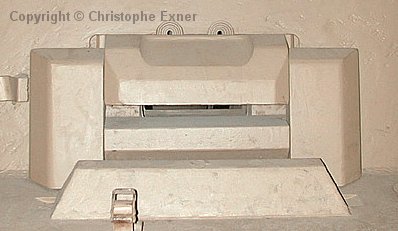
On the superstructure front, the driver's visor (shown above) and the MG position exposed no welds whatsoever, with all parts being keyed and bolted into the armour plate.
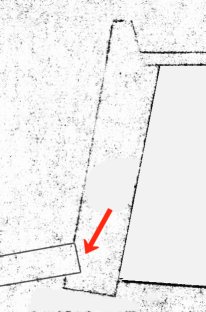
The glacis plate was welded above and below to the front superstructure plate. And as this German diagram shows, a groove was cut in the superstructure front plate to seat it more firmly.
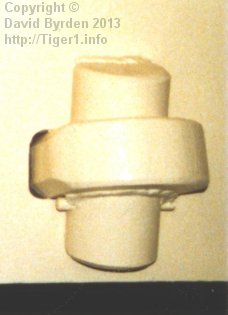
The glacis plate had a tab extending through a hole in the superstructure front. On the inside of the tank, a dowel locked it in place. Notice the single small pin running through it, proof that it was hammered into place from below.
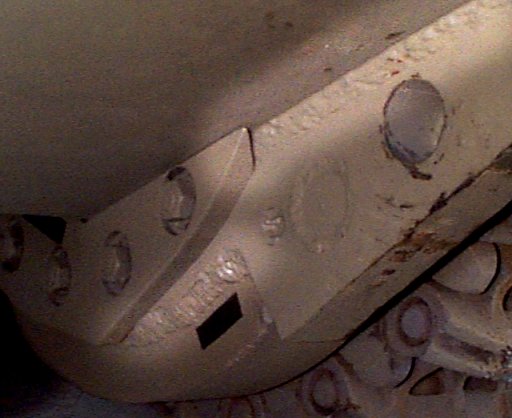
The side wall was welded to the lower front plate, and to the final drive's armour cover. A bolted metal plate protected part of those joints.
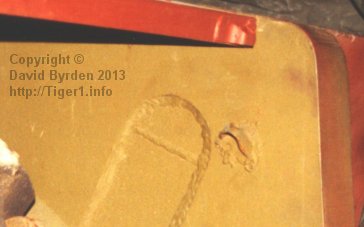
Some of these joints were interlocked, with tabs on the front plates inserted into round-ended slots in the side plates. The ends of these slots were filled with semicircles of metal and then welded. The tabs were shorter than the width of the side plates, ensuring a recess for the weld.
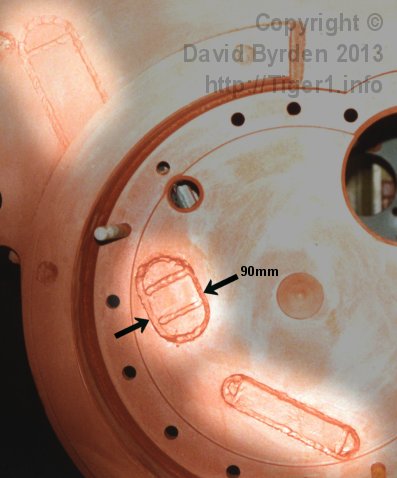
You can see more of these interlocks when the final drive housing is removed. The interlocking tabs are 10mm thinner than their own plates, e.g. 90mm wide on a 100mm plate.
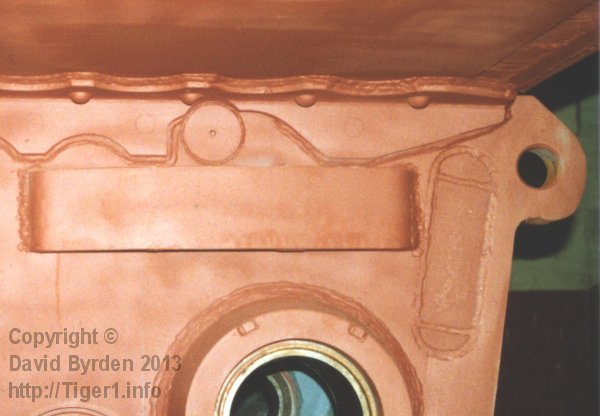
There was one interlock in each lower rear side.
All along the underside of the sponsons, at the joint with the side wall, there was a flange iron. It was welded at the edges, riveted on the top, and fixed with flat-headed bolts on the side. Its scalloped shape gave strength to the welds.
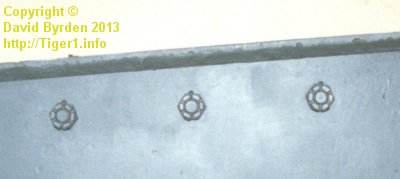
Inside the vehicle you can see the bolts on the side wall, but there is no sign of the rivets on the sponson floor plate.
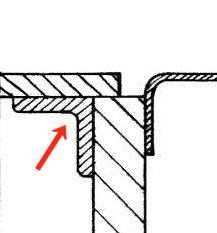
This extract from a German diagram shows that the sponson floor sat upon the side walls, leaving a notch for weld, as you can see in the prior photo. The flange iron is arrowed. This profile is located in the radiator compartments.
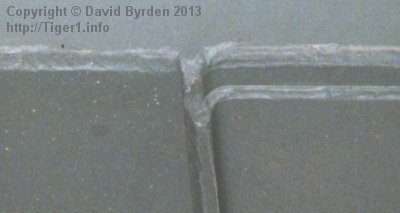
This is the rear wall of the tank. The same joint from the diagram can be seen here.
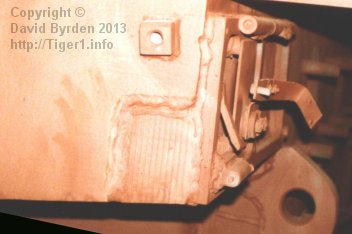
The rear wall was set into a notch in the sponson sides, with the weld showing at the rear. At the bottom of this joint there was an interlock.
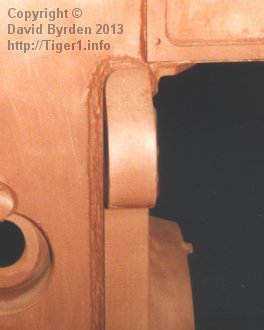
The hull lower sides continued beyond the rear wall.
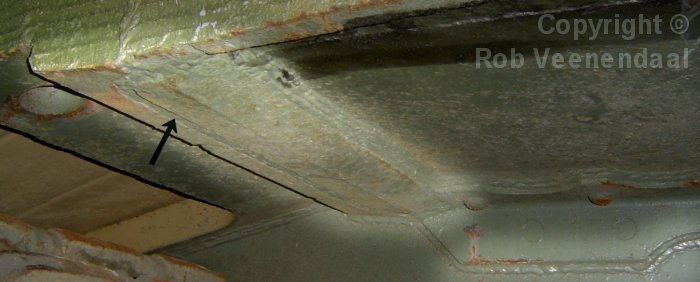
At the front underside of each sponson, a solid metal piece was welded into the superstructure front plate. It protected and seated the sponson floor plate.
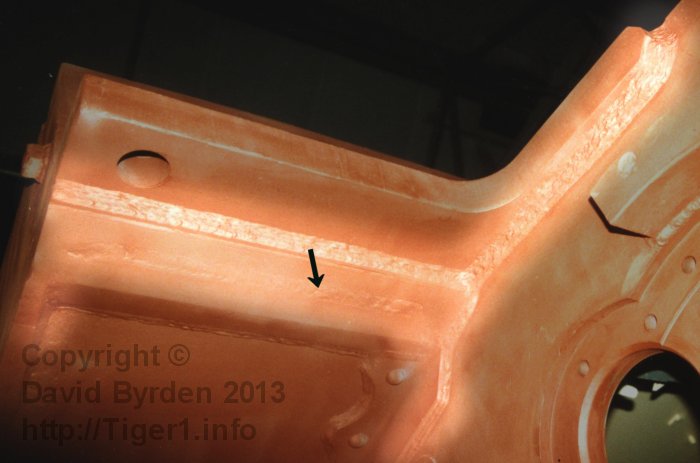
This view of the front underside of a sponson shows a number of weld lines. The weld for the sponson support piece is arrowed.
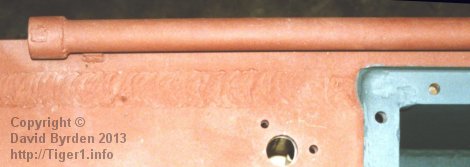
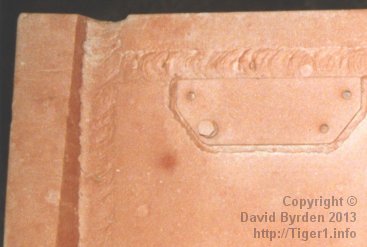
The top and bottom plates, each 25mm thick, sat in notches in the side plates. Their welds were not exposed to incoming fire.
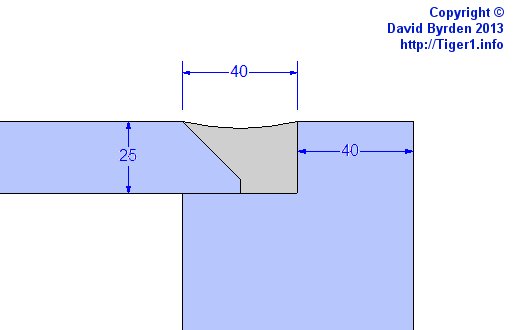
Although we have no German diagrams of these joints, we know that the roof plate overlapped the side plates by 20mm, so I think this is how the plates were welded.
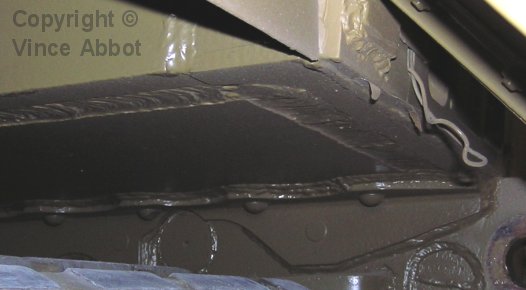
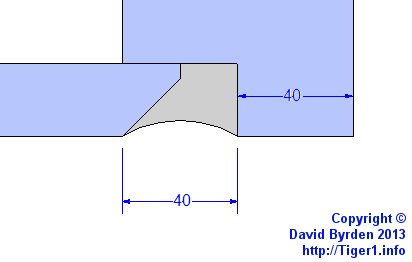
The bottom plates of the side sponsons were apparently joined in the same way.
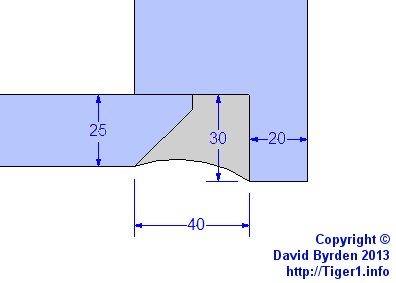
However, the hull bottom plate had a slightly different joint; the hull side extended 5mm below the plate.
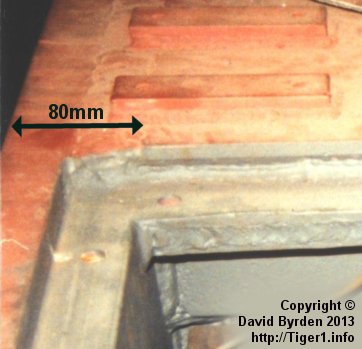
This is the left rear corner of the roof plate, made visible by removing the large radiator intake grille. The notch in the 80mm side plate is visible; it continues unbroken the full length of the plate, seating both the grille and the hull roof plate. Note that the rear edge of the roof plate has a recess so that its weld sits inside it, and does not interfere with the seating of the grille.